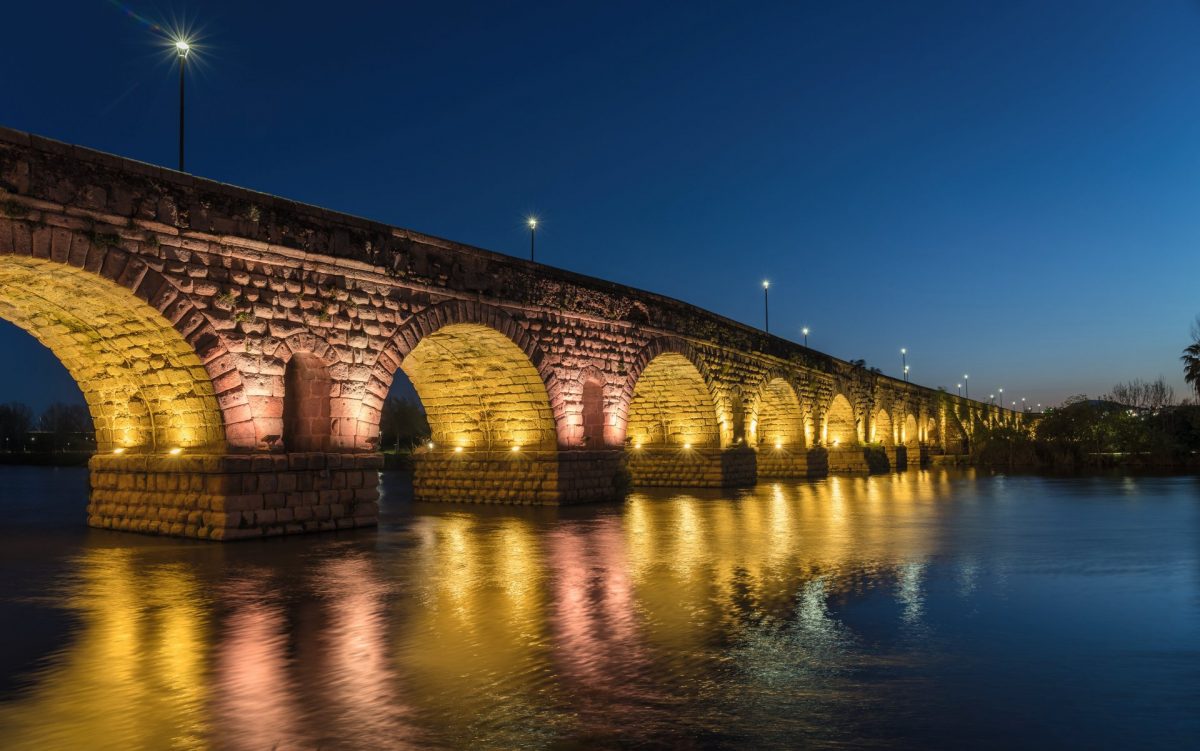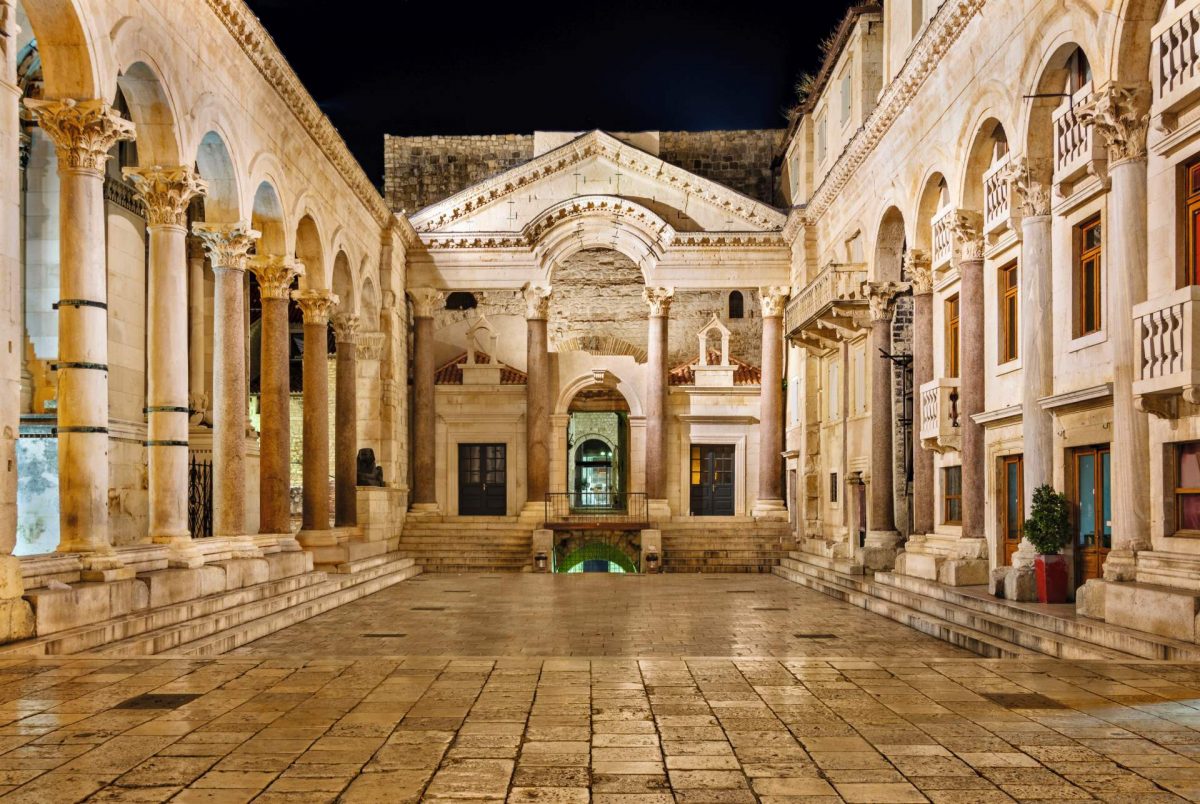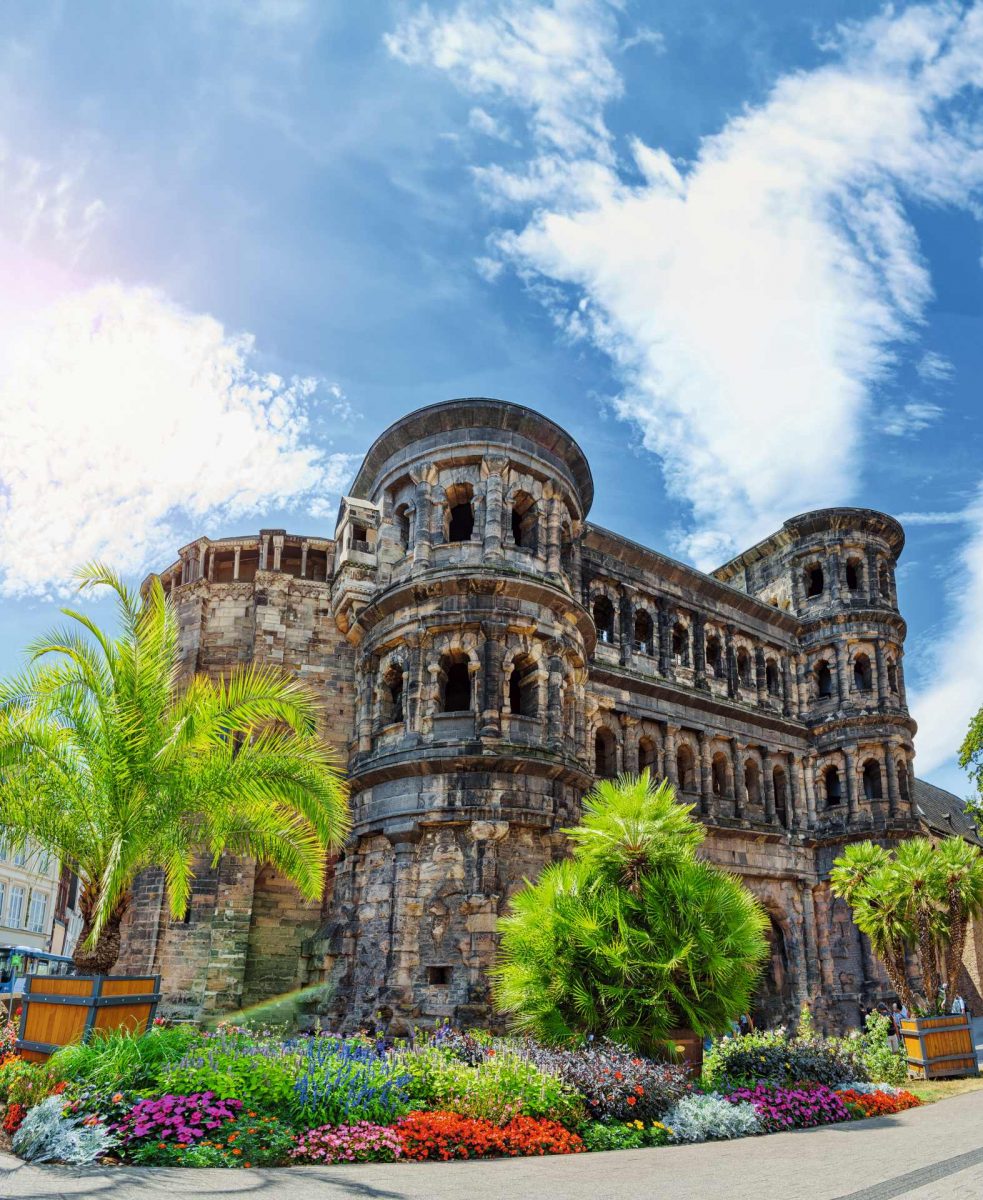Architectural marvels from Hellas and the Roman Empire are visible beyond just Greece and Italy.
In their heyday, the mighty states of antiquity extended beyond the lands of modern Greece and the Apennines. Hellenic colonies thrived where today’s resorts of Krasnodar Territory, Crimea, Turkey, North Africa, and Southern France are located. The Roman Empire extended its architectural reach to places as far-flung as Scotland, Spain, Syria, and Egypt. For historians, these are opportunities to ponder the destinies of civilizations; for travelers, a chance to encounter antiquity in unexpected locales far from Greece and Rome.

MÉRIDA, SPAIN
In Mérida, the capital of Spain’s Extremadura, all the city-forming structures of a Roman city have been preserved. A theater and amphitheater for 15,000 spectators for gladiatorial combats, a circus, a 792-meter-long bridge over the Guadiana River (comparable to Santiago Calatrava’s modern bridge), two aqueducts, the Arch of Trajan, and the Temple of Diana. However, historians assert that the temple is unrelated to the goddess of the hunt, instead celebrating the empire’s and emperors’ grandeur among its columns. To delve into the details, visit the National Museum of Roman Art featuring mosaics, amphorae, and sculptures.

Roman Emperor Octavian Augustus established Mérida as a retreat for legionnaires retiring after victorious campaigns. Today, they have been replaced by tourists from around the globe. Until the end of August, Mérida hosts the International Classical Theater Festival. On the ancient stage, nine performances will be presented, including contemporary adaptations of Medea and Oedipus Rex.
SPLIT, CROATIA
Diocletian’s Palace nearly encompasses half of Split’s historic center. Roman Emperor Diocletian, one of antiquity’s most formidable and ruthless leaders, resided in this palace on the Adriatic coast after relinquishing power. It is not just an immense imperial residence but also a formidable fortress complete with towers and gates. During the Middle Ages, ordinary people moved in with their shops, workshops, and urban life. The Temple of Jupiter was first transformed into Diocletian’s mausoleum and later into a Catholic cathedral. Restaurants within the fortress walls continue to greet visitors — experience being an imperial guest! Artifacts from ancient times found in and around Split are displayed at the Museum of Croatian Archaeological Monuments. In September, view the exhibition to the accompaniment of musicians during the traditional Split at Night Jazz Festival. If you can’t make it to Split soon, revisit Game of Thrones — many episodes were filmed in this very palace.

TRIER, GERMANY
Northern Rome — no more, no less! Trier, Germany’s oldest city, was once known as “Northern Rome.” The Black Gate, or Porta Nigra, in Trier, is the largest Roman gate north of the Alps. Originally one of four city entrances in antiquity, it was converted into a church in the Middle Ages. Today, it stands as the principal attraction in the city along the Moselle River. Interestingly, the young Karl Marx could see the Black Gate from his parents’ home window; he is Trier’s most famous resident. Vehicles and pedestrians continue to cross the river via the Roman bridge. The Barbara Baths in Trier were once the largest Roman baths outside Rome, covering 42,000 sq. m. Archaeologists have unearthed only a third of this site; visitors must imagine its past splendor. For authentic atmosphere and evocative photos, head to the ruins of the Imperial Baths. Trier invites travelers to enjoy the Roman Life Festival throughout the summer. The festival honors ancient gastronomy in July and craftsmanship in August. All festival activities including shows and workshops take place amidst Trier’s ancient ruins.

BATH, UK
The Roman Baths and Temple in Bath rank among the UK’s most frequented landmarks. The thermal springs in Somerset were discovered by Celts who inhabited the area before Roman times. They dedicated these springs to goddess Sulis and used them for bathing. The pool remains filled with hot water at +46°C, offering a surreal time-travel experience as if someone in a toga might emerge any moment from the caldarium. Yet much of what enchants visitors today was constructed in the 19th century. What remains from Roman times lies 6 m below today’s street level. Everything above that was built later on. Visit the Roman Baths Museum for a genuine taste of antiquity.

EL JEM, TUNISIA
El Jem’s colossal amphitheater in Tunisia seats 30,000 people and is slightly smaller than Rome’s Colosseum, which served as its model. It’s also the largest amphitheater outside Italy. Featuring numerous staircases and gates, cages for wild beasts, and subterranean galleries. You’ve likely seen it on screen — the Hollywood film Gladiator was shot in El Jem. El Jem, once known as Thysdrus and thriving on olive groves, was second only to Carthage in wealth in North Africa and could well afford such architectural opulence. Near El Jem, archaeologists have uncovered villas with detailed mosaics depicting amphitheater battles and Dionysian processions. These mosaics are displayed at the El Jem Museum where one villa has been fully reconstructed. In July, El Jem hosts an annual International Festival of Symphonic Music with performances by orchestras and opera singers from around the world.

Photo: shutterstock.com


